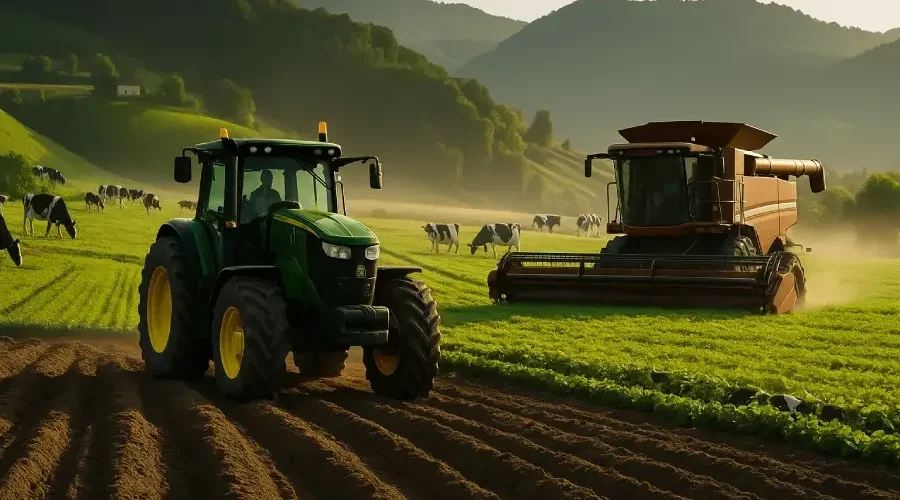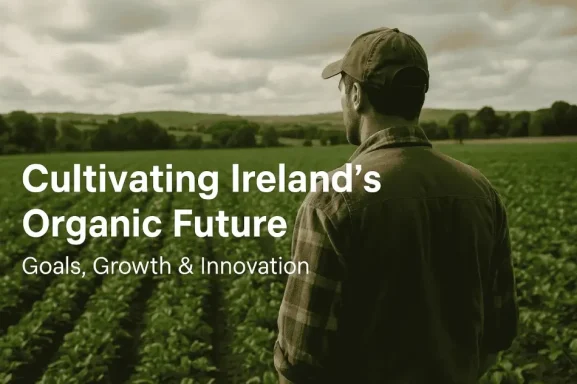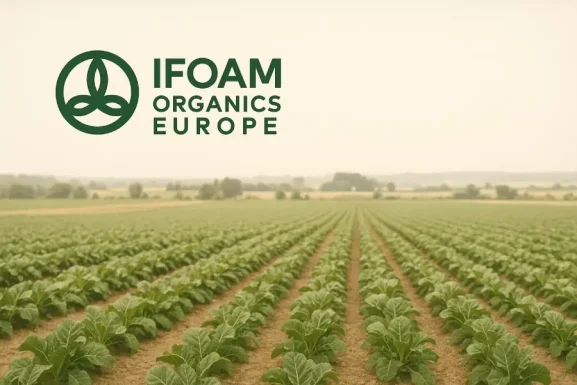A Greener Plate for Everyone: Inside Ireland’s Organic Food Strategy
Walk into any supermarket in Ireland today, and you’ll notice something: more and more shelves stocked with organic fruit, vegetables, milk, and even salmon. Just a few years ago, these options were rare. Now, the green EU organic leaf logo is popping up on everything from baby food to potatoes. This isn’t a coincidence, it’s the result of a national effort to put organic food at the heart of Ireland’s agri-food future.
In 2019, a group of farmers, food producers, retailers, and policymakers came together to draw up a roadmap for organic food in Ireland. The outcome was the Review of the Organic Food Sector and Strategy for its Development 2019–2025, a plan that sets out clear targets for how organic farming can grow, thrive, and serve both Irish communities and international markets.
For those of us who care about what’s on our plates and how it got there, this strategy is worth knowing. Here’s what it says, why it matters, and how it connects to building a healthier, more sustainable food culture.
Why Organic Matters to Ireland
At its core, the organic movement is about respect for the land, for animals, and for our own health. Organic farmers avoid synthetic pesticides, rely on crop rotation to keep soil alive, and give animals space to roam. The strategy reminds us that these practices don’t just produce food; they also help protect biodiversity, improve soil fertility, and support rural communities.
Ireland has a natural advantage. Our climate, lush pastures, and long tradition of family farming give us a head start in producing food that is both high-quality and environmentally responsible. When consumers choose organic Irish produce, they’re not only feeding themselves and their families, they’re supporting a system that safeguards nature and rural livelihoods.
A Market on the Rise
Over the past decade, Ireland’s appetite for organic food has grown steadily. Between 2012 and 2016, the value of the organic retail market jumped from €107 million to €142 million, a rise of around 32% . By 2018, Irish consumers were spending over €240 million annually on organic products, with staples like carrots, potatoes, milk, and yoghurt leading the way.
Research cited in the strategy reveals that 90% of Irish shoppers believe organic food is of higher quality. For many, it’s not just about health, but also about trust and sustainability. People want to know that what they’re eating is good for them and for the planet.
Supermarkets remain the main place where consumers pick up organic items, about 70% of organic sales happen there . But local farmers’ markets, farm shops, and box schemes are growing in popularity. These outlets connect shoppers directly with the people who grow their food, creating a sense of community and transparency.
Interestingly, Ireland is also carving out a niche in the international organic seafood market. Organic salmon exports were worth over €60 million by 2015, highlighting the potential of sustainable aquaculture .
The Gaps in Supply
Despite the growth in demand, the strategy notes a mismatch between what Irish consumers want and what Irish farmers are producing. Over 70% of organic fruit and vegetables sold in Irish shops are imported . Similarly, organic dairy accounts for just 0.1% of Ireland’s total milk pool, leaving plenty of room for expansion.
Beef and sheep farmers dominate the organic sector, yet these markets already face pressure from oversupply. The strategy recommends diversifying into areas where consumer demand is stronger, like organic chicken, eggs, vegetables, and cereals for animal feed. Growing more of these products at home would reduce imports, cut food miles, and help the sector capture more value.
Strengths, Weaknesses, Opportunities, and Threats
The strategy team conducted a SWOT analysis to take stock of where Ireland’s organic sector stands . Here are some highlights that matter for consumers and producers alike:
-
Strengths:
-
Ireland’s image as a “green” producer with clean air, fertile land, and pasture-based systems.
-
Strict EU organic rules and the EU organic logo, which ensure trust and traceability.
-
Strong government support through targeted schemes.
-
-
Weaknesses:
-
Limited scale and fragmented supply make it difficult for Irish organics to compete with larger markets.
-
High production and distribution costs compared to conventional systems.
-
Low consumer awareness outside niche groups.
-
-
Opportunities:
-
Growing appetite for organic food both in Ireland and internationally.
-
A chance to replace imported fruit, vegetables, and cereals with Irish produce.
-
Expansion opportunities in dairy (especially liquid milk and cheese), poultry, and salmon.
-
Public procurement—schools and hospitals could source more organic food.
-
-
Threats:
-
Brexit has created uncertainty for exports.
-
Other “green” labels, like “sustainably produced” or “local,” may compete with organics for consumer attention.
-
Yield gaps compared with conventional farms can make organic farming less financially attractive.
-
The Role of Supports and Policy
To help farmers transition to organic systems, the government is backing a set of support schemes:
-
The Organic Farming Scheme (OFS) provides financial assistance for conversion and ongoing management. Over 1,500 farmers, covering more than 72,000 hectares, had joined the scheme by 2018 .
-
The Organic Capital Investment Scheme supports investment in infrastructure and equipment.
-
The Organic Processor Investment Grant helps build capacity for adding value and creating new organic products.
The strategy also calls for a stronger Implementation Group to monitor progress, ensure that goals are met, and coordinate with the broader Food Wise 2025 agenda. This group includes voices from government, farming organisations, processors, and consumer representatives.
Connecting Farmers and Consumers
One of the most exciting parts of the strategy is its focus on building bridges between the people who produce food and the people who enjoy it. The plan highlights:
-
Public procurement as a driver: By sourcing organic meals for schools, hospitals, and public institutions, Ireland can guarantee stable markets for farmers while ensuring that children and patients access nutritious, chemical-free food.
-
Consumer education: Campaigns will explain what the EU organic logo means, counter misinformation, and show how organic farming supports biodiversity, soil health, and rural jobs.
-
Encouraging young farmers: New apprenticeship programmes and training modules in agricultural colleges aim to give the next generation the skills they need to succeed in organic production.
For Irish consumers, this means more confidence in the food they buy, more local options on the shelves, and more opportunities to support communities and the environment with their shopping choices.
Looking Ahead
The Organic Food Sector Strategy is not static. Its targets will be reviewed after five years to make sure progress is being made and to adapt to changing circumstances. Flexibility is built into the plan, acknowledging that farming faces challenges from climate change, market uncertainty, and evolving consumer expectations.
What remains constant is the commitment to a food system that works with nature rather than against it. From reducing the use of synthetic inputs to expanding home-grown organic fruit and vegetables, the strategy provides a roadmap for how Ireland can nourish both its people and its land.
Frequently Asked Questions
Ireland’s Organic Food Strategy 2019-2025 is a national roadmap developed by farmers, producers, retailers, and policymakers. It aims to grow the organic food sector, reduce imports, boost exports, support sustainability, and align with Ireland’s agri-food future.
Organic food matters in Ireland because it:
- Avoids synthetic pesticides and supports soil health, biodiversity, and animal welfare,
- Strengthens rural communities and farmers,
- Aligns with consumer demand for quality and sustainability.
Yes, we provide 24/7 customer support through multiple channels including email, phone, and live chat.


